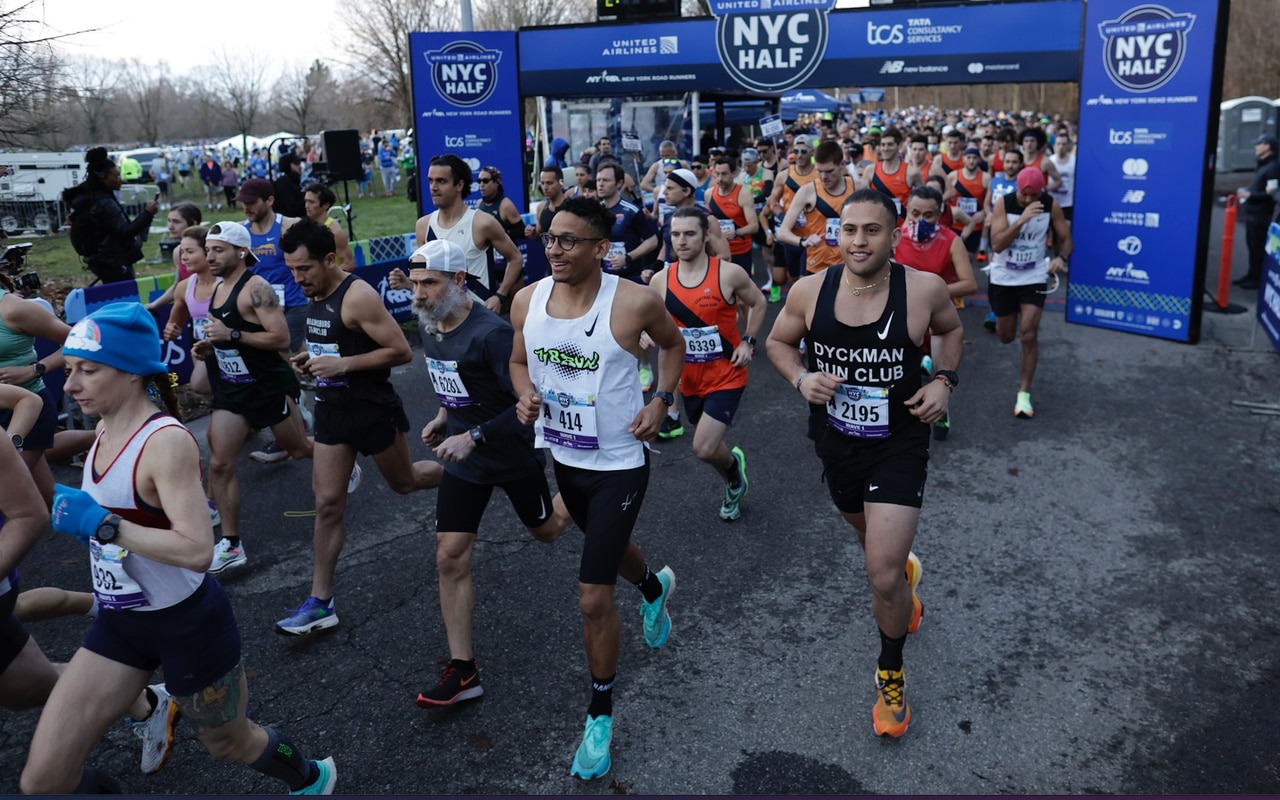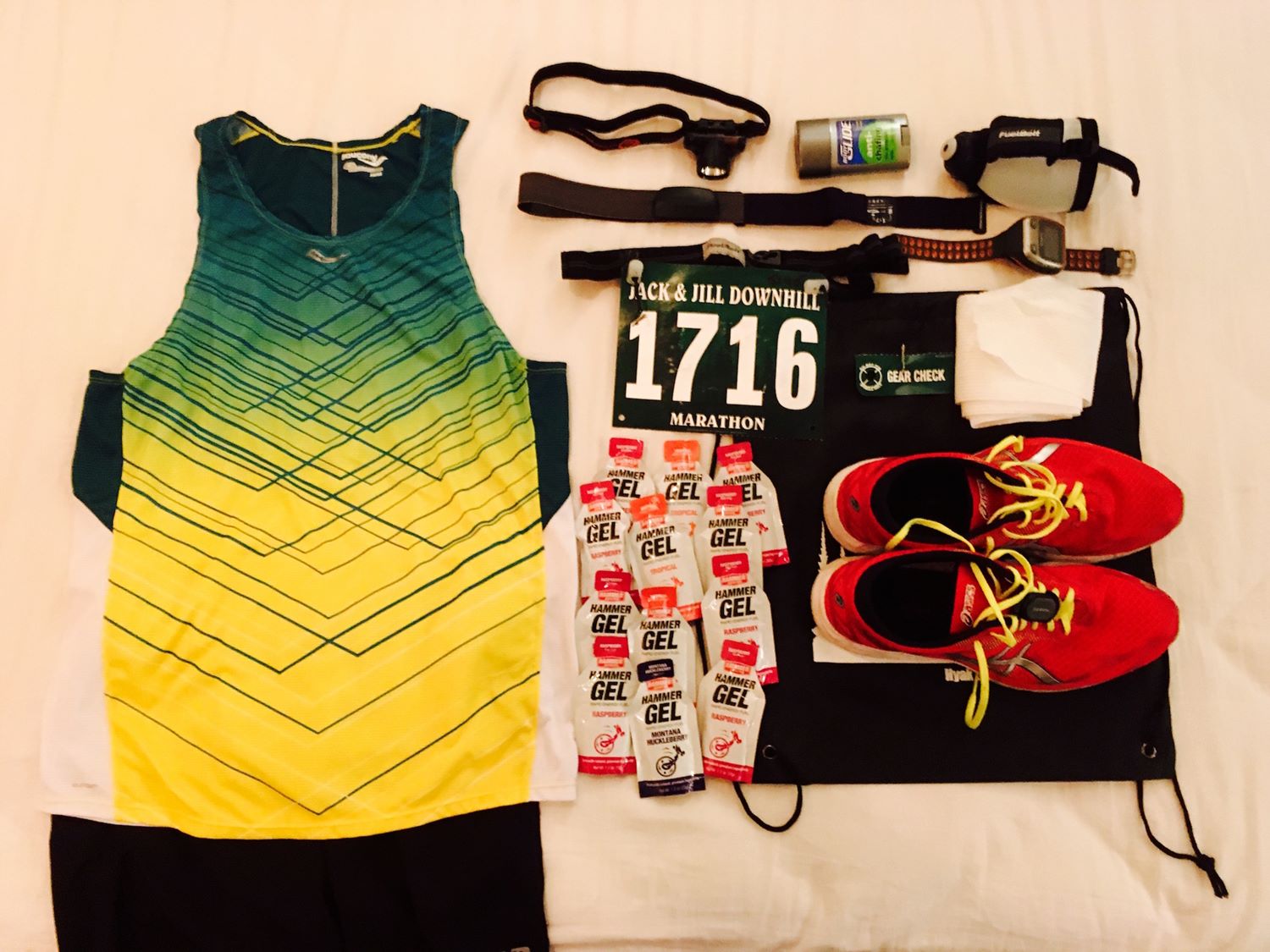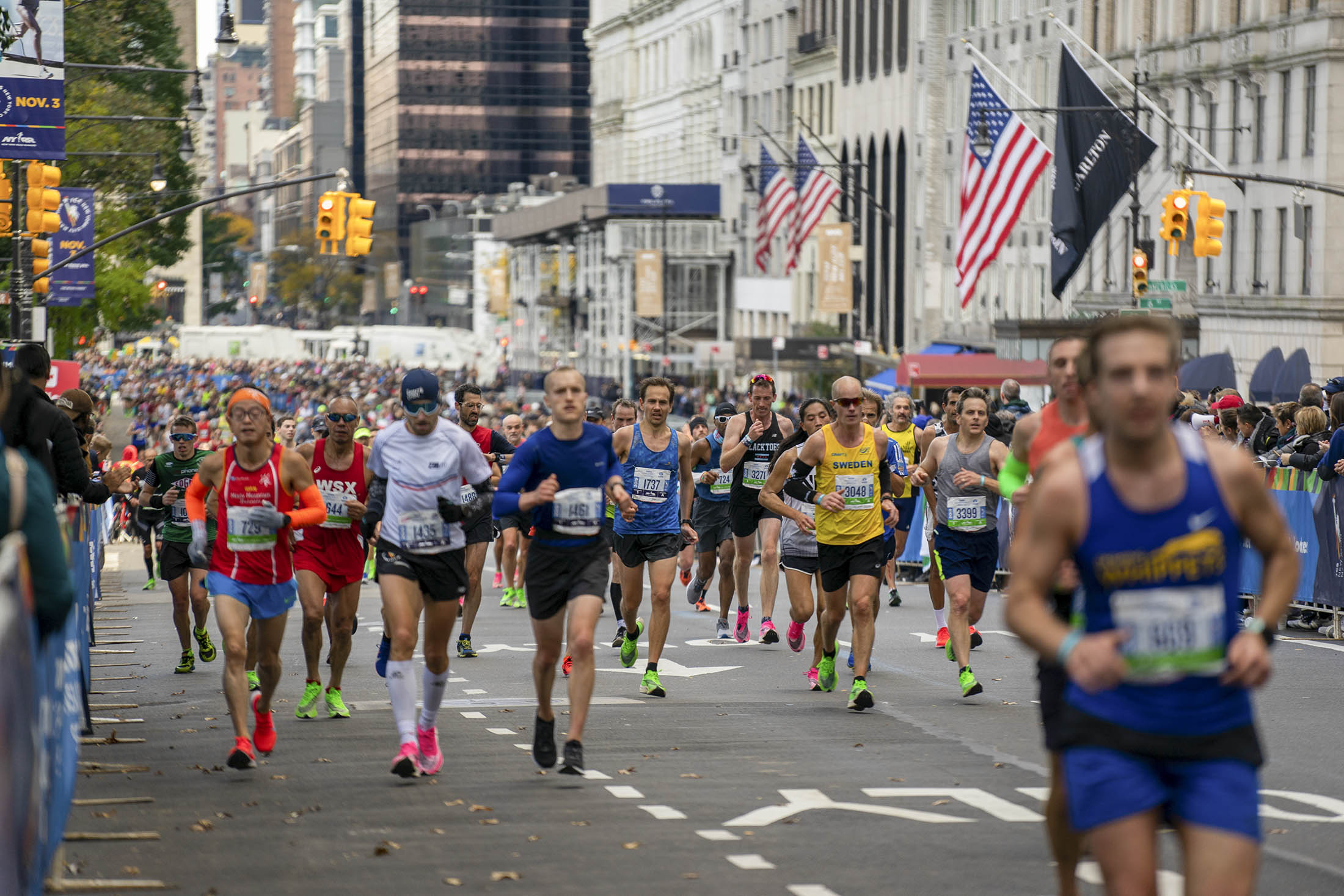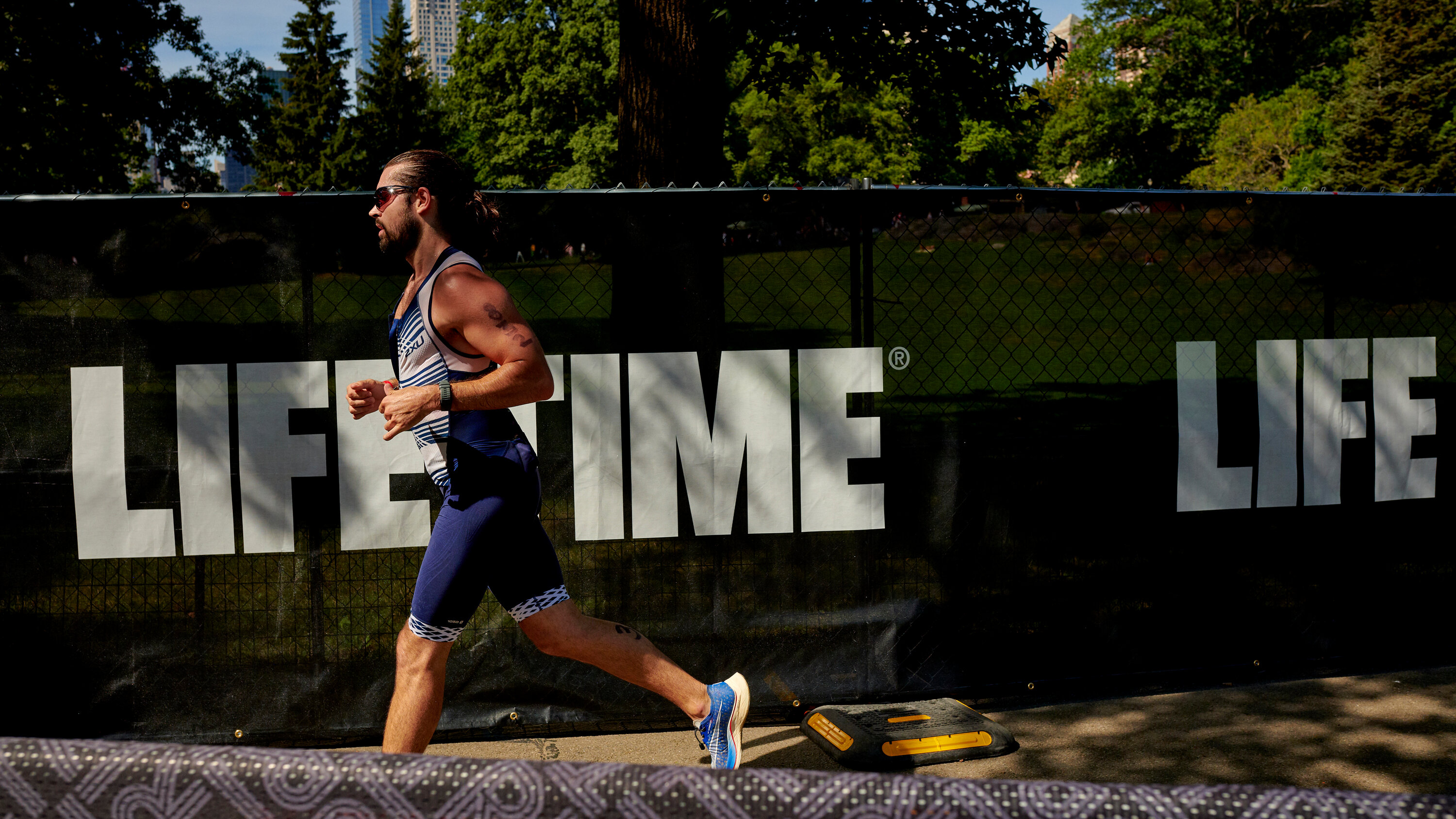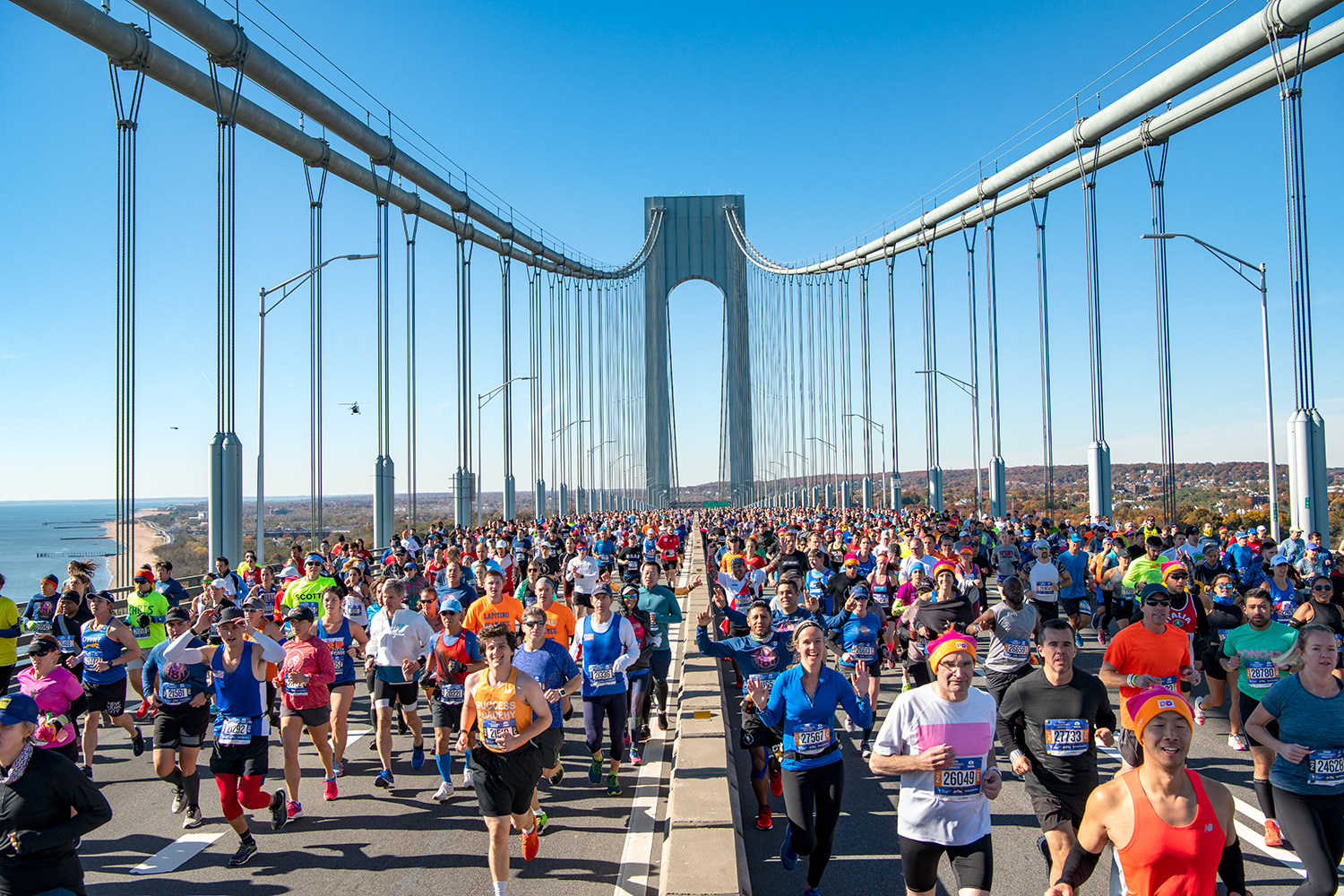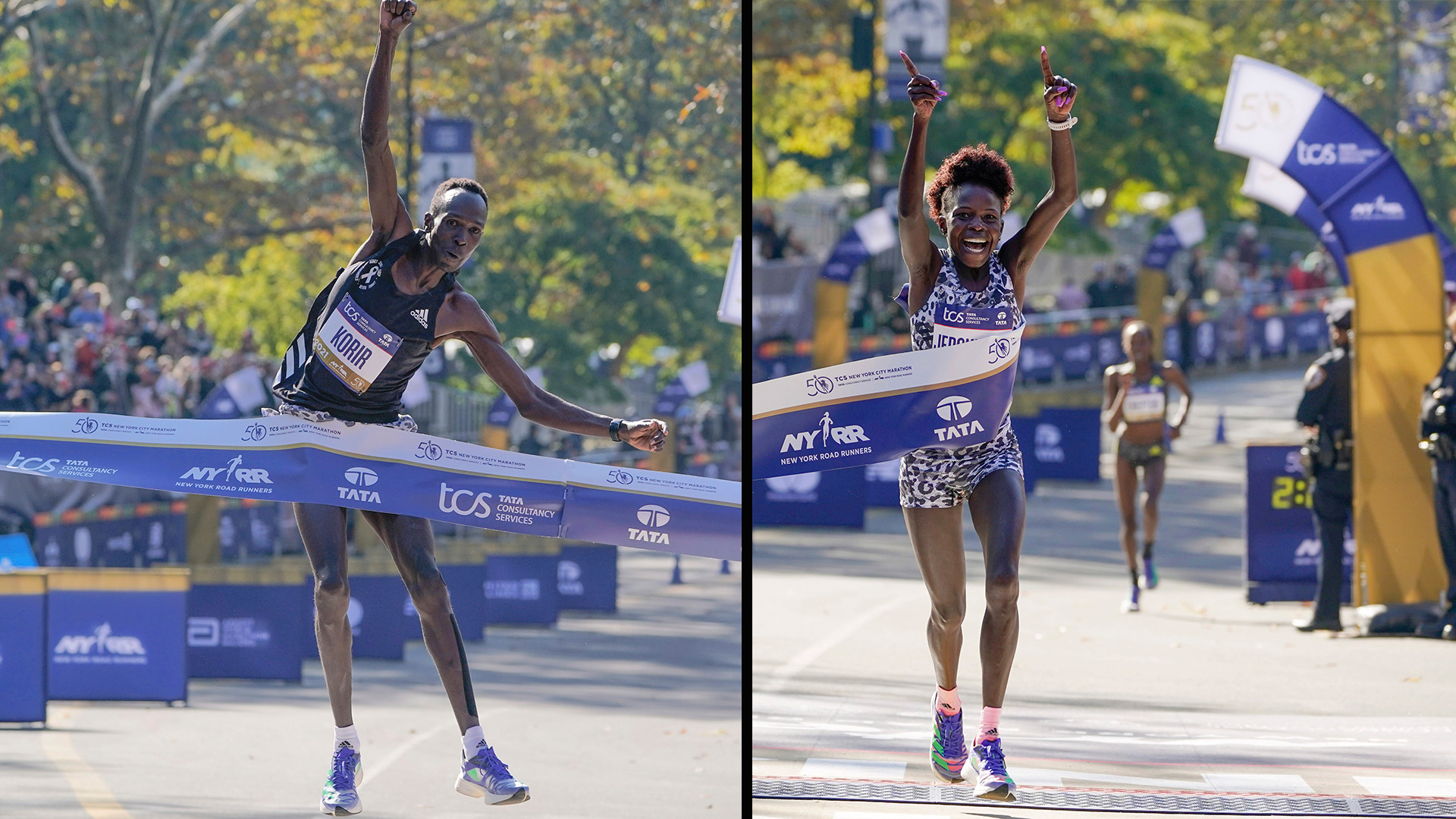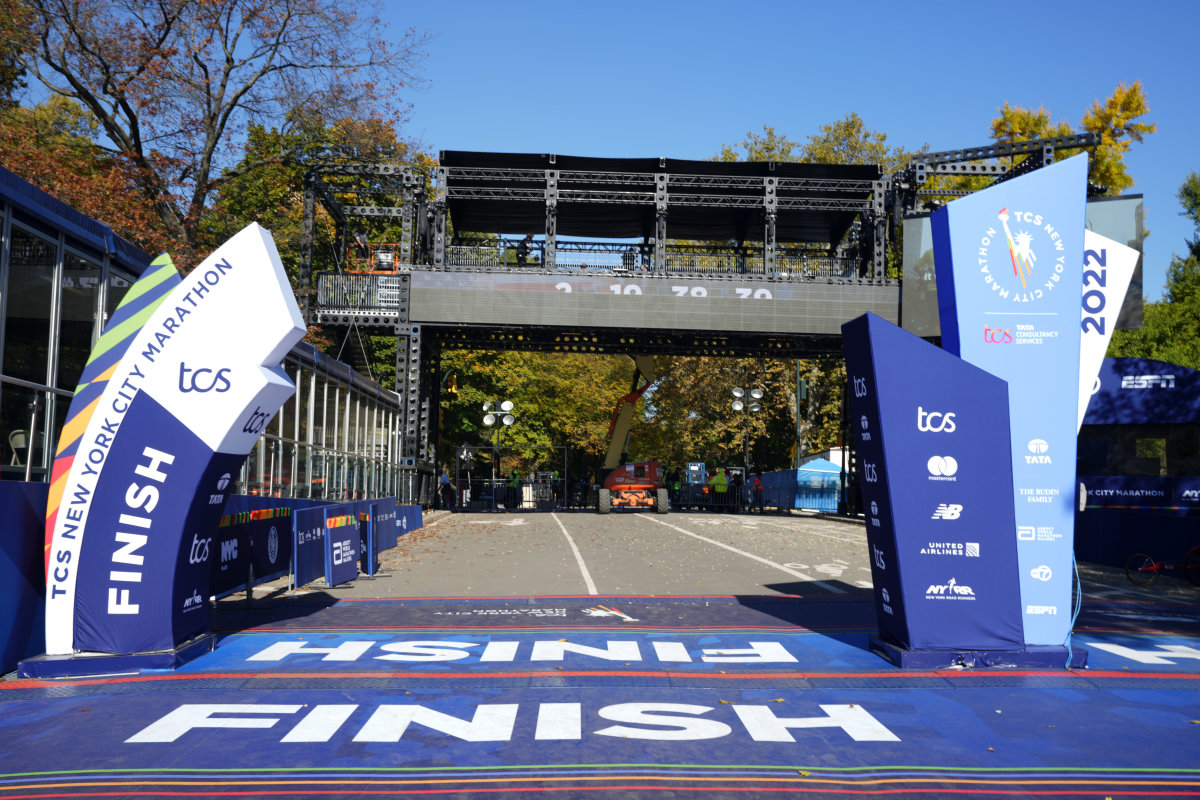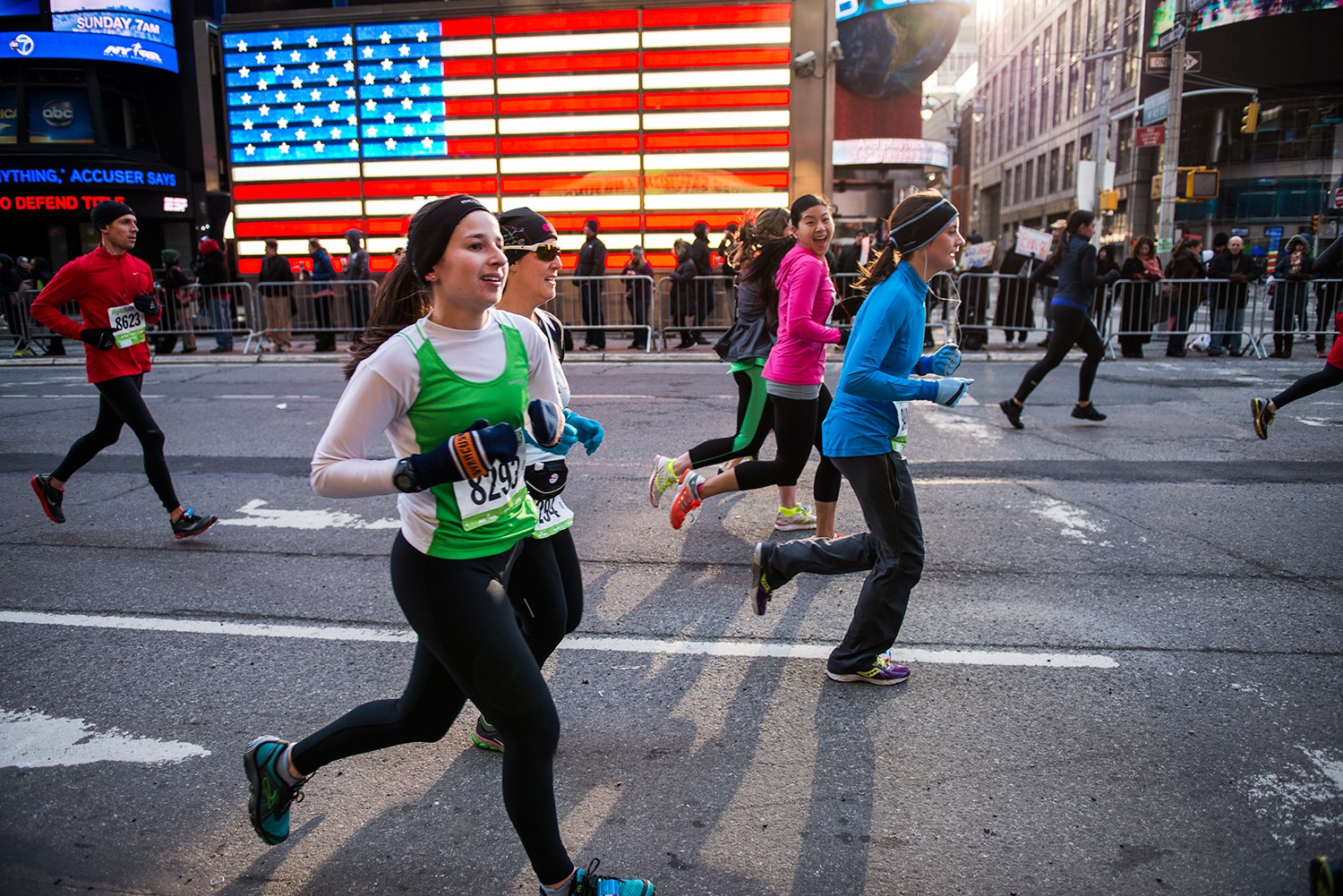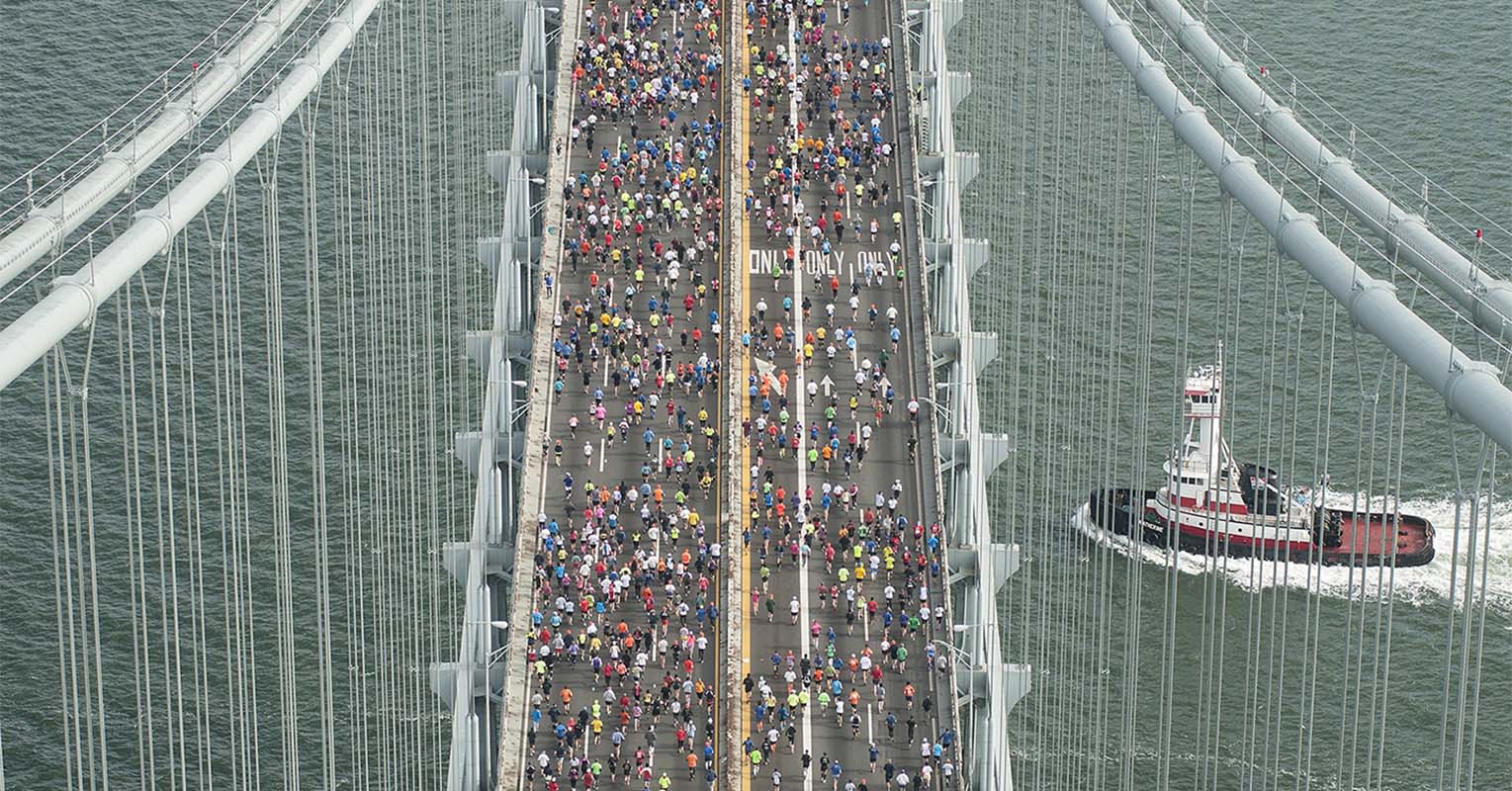

Featured
How Many Miles Is The NYC Marathon
Modified: January 2, 2024
Discover the Featured NYC Marathon! Find out how many miles are in the iconic race and start planning your own marathon journey in the Big Apple.
Introduction
The New York City Marathon is one of the most iconic and prestigious endurance races in the world. It attracts thousands of participants from around the globe each year, all vying to conquer the challenging course that winds through the streets of the city that never sleeps. Whether you’re a seasoned marathon runner or someone who’s just dipping their toes into the world of long-distance running, the question of how many miles the NYC Marathon covers is likely to cross your mind.
In this article, we’ll delve into the history of the NYC Marathon, explore the factors that influence the total distance of the race, and address some of the controversies that have surrounded the accuracy of the race’s length over the years. By the end, you’ll have a clear understanding of the distance runners must tackle in order to complete the NYC Marathon.
Before we dive into the specifics, it’s worth mentioning that the NYC Marathon holds a special place in the hearts of both runners and spectators. The event, which had its inaugural run in 1970, has grown exponentially in size and popularity, making it one of the most highly anticipated races on the global marathon circuit. It is more than just a race; it’s an experience that encapsulates the spirit, diversity, and energy of New York City.
Every year, the marathon brings together participants from diverse backgrounds and running abilities. Elite athletes, recreational runners, charity fundraisers, and first-time marathoners all join forces to take on the challenge. The race not only tests their physical endurance but also pushes them to tap into their mental strength and determination.
Now that we have set the stage, let’s dive into the historical origins of this prestigious race that covers the streets of the Big Apple.
History of the NYC Marathon
The history of the New York City Marathon is a story of passion, determination, and community. The race was first held in 1970, organized by a group of runners who were inspired by the Boston Marathon and wanted to bring a similar event to their city.
With just 127 participants in its inaugural year, the NYC Marathon has come a long way since then. It has grown into one of the largest marathons in the world, attracting thousands of runners and millions of spectators who line the streets of the five boroughs to cheer on the participants.
The course itself has undergone several changes throughout the years, adapting and evolving with the city. Initially, the race consisted of several loops around Central Park, but by 1976, it expanded to a route that weaves through all five boroughs of New York City.
One of the most memorable moments in the history of the race occurred in 1978 when Norwegian runner Grete Waitz won the women’s division, becoming the first female winner of the NYC Marathon. Her victory not only broke barriers for women in the sport but also inspired countless others to lace up their running shoes and take on the challenge.
Another significant milestone for the race was reached in 2004 when the NYC Marathon celebrated its 35th anniversary. To mark the occasion, the marathon introduced a new feature called the “Five-Borough Challenge,” where participants who completed the race for five consecutive years would be recognized as Five-Borough Champions.
The race has also played host to numerous iconic moments and remarkable achievements. In 2011, Kenyan runner Geoffrey Mutai set a new course record, finishing the race in an astonishing time of 2 hours, 5 minutes, and 6 seconds. This record-breaking performance solidified the NYC Marathon’s status as one of the most competitive and prestigious marathons in the world.
Throughout its history, the NYC Marathon has not only provided a platform for elite athletes to showcase their talent but has also been a catalyst for positive change. The race has raised millions of dollars for various charitable organizations, making a significant impact on the lives of countless individuals and communities.
As we move forward, it’s important to reflect on the rich history that has shaped the NYC Marathon into what it is today. It’s a celebration of the human spirit, resilience, and the power of community. Let’s now explore the total distance that runners must conquer to successfully complete this legendary race.
The Length of the NYC Marathon
The New York City Marathon is known for its challenging and diverse course, spanning all five boroughs of the city. But how many miles do the runners actually cover during this epic race?
The official distance of the NYC Marathon is 26.2 miles, or 42.195 kilometers. This is the standard distance for a marathon race, set by the International Association of Athletics Federations (IAAF) and recognized worldwide. The distance represents the approximate length of the ancient Greek messenger’s run from the city of Marathon to Athens, hence the name “marathon.”
But what makes the NYC Marathon unique is the way the course is laid out across the five boroughs. Runners start on Staten Island and cross the Verrazano-Narrows Bridge into Brooklyn, making their way through Queens, the Bronx, and Manhattan, before finishing in Central Park.
The course takes participants on a journey through various neighborhoods, landmarks, and iconic locations, showcasing the diversity and vibrancy of New York City. Runners get a taste of the city’s rich cultural heritage as they pass by neighborhoods like Williamsburg, Long Island City, Harlem, and the Upper East Side.
While the official distance of the NYC Marathon remains the same each year, it’s important to note that the actual distance covered by individual runners can vary slightly. This is due to the race being run on city streets, where it is not always possible to maintain an exact line along the prescribed route.
Additionally, participants may choose to run slightly off-course to high-five spectators, take photos, or stop for refreshments at aid stations. These small deviations can add a few extra meters or even a few hundred meters to the total distance covered by each runner.
It’s also worth mentioning that the NYC Marathon is a certified race, meaning that it has been measured and meets the standards set by the IAAF. The course is officially measured using a calibrated bicycle equipped with a device that records the exact distance traveled.
Overall, whether you’re a seasoned runner aiming for a personal best or a first-time marathoner just hoping to cross the finish line, knowing the official distance of the NYC Marathon can help you mentally and physically prepare for the challenge ahead. So lace up your running shoes and get ready to conquer the 26.2-mile journey that awaits you in the streets of the Big Apple.
Factors That Influence the Total Distance
While the official distance of the NYC Marathon is 26.2 miles, there are several factors that can influence the total distance covered by individual runners. These factors can slightly alter the final distance and add an element of variability to the race.
One factor that can affect the distance is the race course itself. The NYC Marathon is run on city streets, which may not always provide the shortest and most direct route from start to finish. The course designers aim to create an engaging and memorable experience for the participants, which can lead to slight deviations from a straight line.
Moreover, the layout of the course in each borough can influence the distance covered. For example, if there are sharp turns or wider roadways in certain sections, runners may end up running slightly more or less than the official distance.
Furthermore, the number of participants can impact the total distance covered. In a race with thousands of runners, there is often a surge of energy and excitement at the start line. This can lead to slight weaving and maneuvering among runners as they jostle for position. While these movements may seem minor on an individual level, they can collectively add up to extra distance covered.
In addition, individual runner behavior and choices can affect the total distance. Some runners may take wider turns or run closer to the crowd to soak in the atmosphere and enjoy the support of the spectators. Others may stick to a tight path to maintain the shortest distance possible. These small variations can result in minor deviations from the official distance.
It’s important to note that while the NYC Marathon organizers strive to provide an accurate and well-measured course, it is nearly impossible to account for each individual running movement. The race is designed to accommodate a diverse range of runners and their unique styles, preferences, and actions along the course.
Despite the minor variations in the total distance covered by individual runners, the NYC Marathon remains a prestigious and highly regulated event. The race organizers aim to ensure that all participants have a fair and equal opportunity to complete the course and achieve their personal goals.
So as you prepare to take on the challenge of the NYC Marathon, keep in mind that while the official distance is 26.2 miles, your individual experience may result in a slightly different total distance covered. Embrace the journey, stay focused, and give it your all as you embark on this incredible marathon adventure through the streets of New York City.
Controversies Surrounding the Accuracy of the Race
Over the years, the accuracy of the distance covered in the NYC Marathon has been a topic of discussion and debate among runners and race enthusiasts. While the race organizers strive to provide an accurately measured course, there have been controversies and disputes surrounding the accuracy of the race’s distance.
One frequent concern raised by runners is the variability in the GPS measurements recorded by their running devices. GPS devices, while generally reliable, can have minor discrepancies in distance calculations due to factors such as terrain, satellite signal strength, and the device’s margin of error. This can lead to runners’ devices showing slightly different distances from the official 26.2-mile mark.
Another point of contention has been the potential for runners to veer off the prescribed route accidentally or intentionally. With thousands of participants, it’s not uncommon for runners to find themselves caught up in the excitement and energy of the race, inadvertently straying off the intended course.
In recent years, the organizers of the NYC Marathon have taken steps to address these concerns. They use advanced measuring techniques and equipment, including a calibrated bicycle, to ensure the course is accurately measured. The race route is designed and inspected to minimize any potential for runners to deviate from the intended path.
Additionally, race organizers encourage participants to follow the designated course and take precautions not to add unnecessary distance by running too wide or hugging the crowd excessively. They also provide mile markers along the route as checkpoints, serving as a reference point for runners to gauge their progress and ensuring they are following the correct course.
Despite these efforts, it’s essential to recognize that a marathon conducted on city streets can never be perfectly precise for every individual runner. The dynamics of the race, individual behavior, and the inherent variability of GPS devices can lead to slight differences in the total distance covered.
However, it’s important to note that these minor discrepancies do not detract from the achievement of completing a marathon. The NYC Marathon remains a challenging and prestigious event that demands dedication, training, and mental fortitude. The focus should be on the remarkable experience, personal growth, and the incredible sense of accomplishment that comes from crossing the finish line, regardless of the exact distance covered.
As advancements in technology and measurement techniques continue to improve, the organizers of the NYC Marathon are committed to ensuring the race’s accuracy and providing an exceptional experience for all participants. So, lace up your shoes, trust your training, and embrace the incredible journey that awaits you on the streets of New York City.
Conclusion
The New York City Marathon is a legendary race that captivates the hearts and minds of runners from all over the world. With its rich history, challenging course, and vibrant community, it represents the epitome of endurance and human achievement.
Throughout this article, we have explored the official distance of the NYC Marathon, which stands at 26.2 miles. We have also discussed the factors that can influence the total distance covered by individual runners, as well as the controversies surrounding the accuracy of the race.
While minor discrepancies in distance measurement and potential deviations from the prescribed route may exist, they do not diminish the significance of the race or the accomplishments of its participants. The NYC Marathon remains a test of physical and mental strength, pushing each runner to their limits and beyond.
Ultimately, what matters most is the personal experience and journey that each runner embarks upon. The incredible sights, the roaring cheers of the spectators, and the camaraderie among fellow participants create memories that last a lifetime.
So whether you’re a first-time marathoner or a seasoned veteran, the NYC Marathon awaits you with open arms. Embrace the challenge, push through the pain, and revel in the joy of accomplishing something truly extraordinary.
The New York City Marathon is more than just a race; it’s an opportunity to push your limits, inspire others, and be a part of something greater. So, lace up your running shoes, set your sights on the finish line, and join the thousands of runners who have made their mark on the streets of the Big Apple.
Remember, it’s not just about the distance. It’s about the journey you take, the people you meet, and the incredible sense of accomplishment that comes from crossing that finish line.

